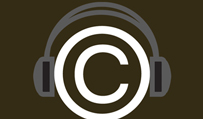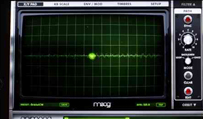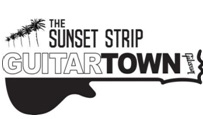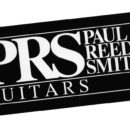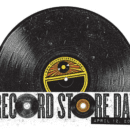
As an intellectual property (IP) attorney and music buff, attorney Rob Litowitz is an expert in the business of ideas, art and talent––and he’s seen artists run afoul of copyright and other IP issues in sampling. Litowitz offers the following tips on IP considerations for music sampling, and how to steer clear of problems in this staple of hip-hop and mashup culture.
1 Face the Music: The Copyright Act protects musical compositions and sound recordings. It gives the copyright owner control over when, where, how and by whom their works can be copied and performed publicly. You can’t copy or perform someone else’s song or recording without their permission or a license. Copyright owners are entitled to reasonable compensation when their works are sampled.
2 Size Doesn’t Matter: Copyright doesn’t just protect the whole song or the entire recording. Taking fragments, snippets or parts of a recording can infringe copyrights just like copying the whole thing. Even extracting a guitar riff, drum beat or hook can violate copyright.
3 Double Trouble: Making things more complicated, would-be samplers have to contend with two separate copyrights––one in the song composition itself (covering music and lyrics) and another distinct copyright in the recording. So to safely and legally sample a portion of a prior recording requires permission from both copyright owners, usually a publishing company (composition) and record label (sound recording).
4 Consider the Source: Licensing fees vary, depending on how much of the prior work you intend to use and who you want to sample. Sampling less than a second will cost less than sampling an extended passage of several bars. You’ll pay a steeper price to sample Led Zeppelin than an obscure blues man from Mississippi.
5 Pay to Play: Recording licenses (covering the copyright in the recording) come in two basic forms: flat fee or royalty. Flat fees can range from as little as $250 to $10,000 to sample an iconic song from a major artist. Royalties typically range between half a cent and three cents for every copy of every track sold. Musical composition licenses (covering the copyright in the song) customarily give that copyright holder a percentage ownership in the new work’s musical composition copyright and usually an advance on the expected publishing income.
6 Not All is “Fair” in Love and Sampling: What if you sample, don’t want the expense and hassle of licensing, and are willing to risk being sued? There are two possible defenses––fair use and de minimis use. “Fair use” is based on the idea that some copying serves useful social purpose––such as education, criticism or commentary. But the commercial use of a sample likely wouldn’t qualify unless it’s part of a parody or satire. The de minimis doctrine might apply to a sample that is so short, and fleeting, that it can be considered trivial. But the line between “trivial” use and infringement is elusive and possibly non-existent. Some courts don’t recognize that line at all, finding any use, however minor, to be an infringement. So with sampling, it’s “mimicus emptor”––copier beware.
7 The Myth of the “Four Note Rule”: There’s an urban legend known as the “four note rule.” According to this lore, four notes or less can be sampled for free. But copyright law contains no “four note” exception to infringement. Link Wray’s guitar riff from “Rumble” has just three notes. But they are among the most iconic––and valuable––notes in the rock canon. Sampling even that short fragment would likely spell big trouble.
8 Beware the Fine Print: If you have a record deal with a label, be especially cautious about sampling. The standard terms of most record contracts contain promises by you, the artist, that everything you deliver to the label is an original work. These “warranties” or “representations” are coupled with “indemnifications” that make you responsible for footing the legal bill for infringement suits. So if sampling without obtaining permission and licenses leads to infringement lawsuits, the pocket that may be emptied could be yours. You could also breach––and lose––your record contract. Mimicus Emptor indeed.
9 Sampling and the Damage Done: Illegal sampling can carry stiff penalties. An aggrieved victim of sampling can choose between two forms of money damages: statutory damages or actual damages. Statutory damages are fines established by law and imposed by the court. They can range from $750 - $30,000 for each single act of infringement. If the infringement is found to be willful, the penalties can skyrocket to $150,000 per infringement. So if you sample fragments from multiple recordings without getting a license or clearance, statutory damages can become steep. The copyright owner can elect to forego statutory damages in favor of recovering the infringer’s profits, which also can be considerable if the new, infringing song hits it big. And adding still more pain, the court likely will block all future sales and can order the destruction of all existing copies.
10 The Girl Talk Paradox: If you choose to ignore these tips, is trouble sure to follow? Not if you’re Greg Gillis, better known by his stage name “Girl Talk.” Gillis blends dozens of songs to create mesmerizing works. But Girl Talk operates without the safety net of copyright licenses. Girl Talk would seem to be America’s Most Wanted Infringer. Yet he has never been sued. Some think the recording industry fears that a court might validate the “Fair Use” defense, threatening their entire business model. So for Gillis the adage may be true, sometimes the best defense is a good offense. But for most artists, especially one’s not willing to risk their livelihoods, the lesson from the Girl Talk Paradox is this—don’t try this at home.
miniBIO: Rob Litowitz is a partner at Finnegan, one of the world’s largest IP law firms. Rob has touched many aspects of the music industry, from representing musicians and radio personalities, to founding a record label, to managing artists and promoting concerts. Music Connection recognized him as one of “50 Innovators, Iconoclasts, Groundbreakers, and Guiding Lights of 2008.” To read Litowitz’s thoughts on the intersection of IP law, media and entertainment, visit his blog at http://softrightsblog.com.

